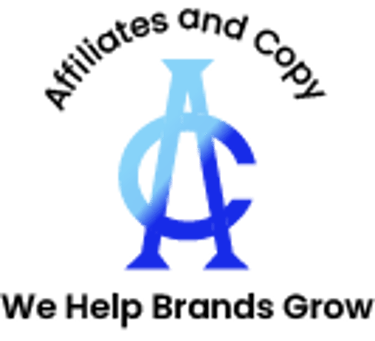Optimizing affiliate marketing landing pages
Optimizing affiliate marketing landing pages is not just a one-time task; it’s an ongoing process of refinement and improvement. By focusing on clear objectives, persuasive design, and continuous testing, you can significantly enhance your conversion rates and maximize your affiliate marketing efforts.
Jatoori Jaturi
1/15/20253 min read


Optimizing Affiliate Marketing Landing Pages
In the fast-paced world of affiliate marketing, landing pages play a pivotal role in driving conversions. These pages act as the bridge between potential customers and the products or services you promote, making their optimization a cornerstone of your strategy. This blog post will delve into the importance of landing pages, how to create effective ones, and provide actionable tips for optimizing them to boost performance.
The Importance of Landing Pages in Affiliate Marketing
Landing pages are the first impression your audience has of the products or services you endorse. Unlike generic pages on a website, landing pages are designed with a singular goal: to convert visitors into leads or customers. Here are a few reasons why they are critical:
Focused Messaging: Landing pages eliminate distractions by focusing on a single offer or call-to-action (CTA), ensuring visitors don’t wander off.
Higher Conversion Rates: A well-designed landing page can significantly improve your conversion rates compared to directing traffic to a generic homepage.
Analytics and Testing: Landing pages provide a controlled environment to track performance metrics and conduct A/B tests for continuous improvement.
How to Create Effective Affiliate Marketing Landing Pages
Creating a compelling landing page involves strategic planning and execution. Follow these steps to ensure your landing pages deliver results:
Define a Clear Objective: Start with a specific goal. Whether it’s generating leads, driving sales, or collecting email subscribers, your objective should dictate the design and content.
Craft a Compelling Headline: Your headline is the first thing visitors see. Make it engaging, benefit-driven, and aligned with your target audience’s needs.
Use Persuasive Copy: Keep your text concise, focused, and persuasive. Highlight the unique value proposition (UVP) of the product or service.
Incorporate Strong Visuals: High-quality images and videos can enhance the appeal of your landing page and make it more engaging.
Include a Strong Call-to-Action (CTA): Your CTA should be clear, actionable, and visually prominent. Use verbs like “Buy Now,” “Sign Up,” or “Learn More.”
Tips for Optimizing Landing Pages
Once your landing page is live, optimization becomes an ongoing process. Here are some key tips to maximize its effectiveness:
A/B Testing: Experiment with different headlines, images, and CTAs to identify what resonates best with your audience.
Speed Matters: Ensure your landing page loads quickly. A delay of even a few seconds can lead to higher bounce rates.
Mobile Responsiveness: With an increasing number of users accessing content on mobile devices, your landing page must be mobile-friendly.
Optimize for SEO: Use relevant keywords in your headlines, meta descriptions, and body text to drive organic traffic.
Simplify Navigation: Remove unnecessary links or distractions that can divert visitors from the desired action.
Leverage Social Proof: Include testimonials, reviews, or trust badges to build credibility and trust with your audience.
Conclusion
Optimizing your affiliate marketing landing pages is not just a one-time task; it’s an ongoing process of refinement and improvement. By focusing on clear objectives, persuasive design, and continuous testing, you can significantly enhance your conversion rates and maximize your affiliate marketing efforts.
FAQs
1. What is the primary purpose of a landing page in affiliate marketing?
A landing page’s main purpose is to convert visitors into leads or customers by providing focused content and a clear call-to-action related to the affiliate offer.
2. How can I make my landing page more engaging?
Use compelling headlines, persuasive copy, strong visuals, and an irresistible call-to-action. Including testimonials and reviews can also boost engagement.
3. Why is mobile responsiveness important for landing pages?
With a significant portion of traffic coming from mobile devices, a mobile-responsive landing page ensures a seamless user experience, reducing bounce rates and increasing conversions.
4. How often should I update or test my landing pages?
Regularly conduct A/B testing and updates to optimize your landing page performance based on user behavior and analytics data.
5. What are the most critical elements of a high-converting landing page?
Clear objectives, a compelling headline, persuasive copy, strong visuals, an actionable CTA, fast loading speed, and mobile responsiveness are essential components.
